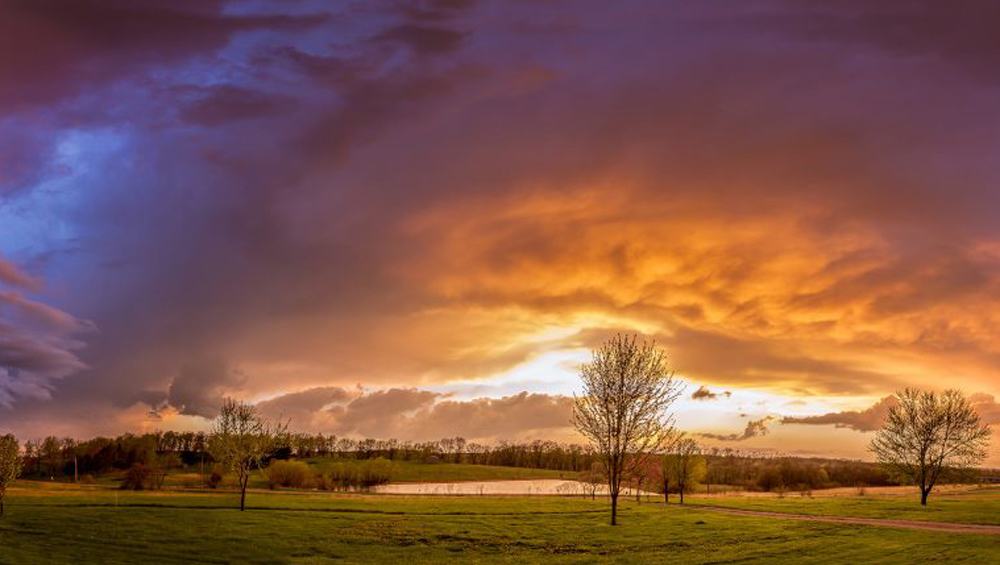
For Bolstering Local News, Weather Remains The Most Powerful Tool


Sean McLaughlin
It was always the secret sauce of ratings success. I can’t tell you how many times I woke up on a key day in the old “sweeps” world with one thought on my mind: Please let there be weather! Severe weather? Great. But simply the mere presence of inconvenient weather would often be enough to juice the numbers.
I’m sure there were even a few times we tried to make the most of a passing rain shower. When people wanted weather information, there was really only one place to go — your local TV newscast. Hang on, I’m tearing up. Those were good times.
Fast forward to today and everyone has a virtual meteorologist in his or her pocket. Weather information is available to us all day long from a variety of somewhat reliable tech-driven sources, available on your phone or even smartwatch. Local stations no longer can hold “a first look at the weekend forecast” over your head to get you to watch a few minutes more.
Despite this, the local meteorologist has actually held up pretty well from a value standpoint in the eyes of the news consumer. Any research project that features a local content inventory comes back with weather still at the top of the list. Local meteorologists also tend to be the breakthrough talent in a local landscape that has seen the number of newscast superstars shrink dramatically in recent years.
Why is this? And is there more than can be done with this dynamic to reconnect local news brands to younger audiences?
As to the why, certainly relatability and connection play big roles. Weather talent tend to rely heavily on personality to bring their weather segments to life. Then there is expertise in a topic everyone cares about. How do you not come to like the people who walk you step-by-step through how to plan your morning or weekend? The ones who have the deepest audience connection and most value to the consumer have a great ability to navigate “the big three” of weather: personality, weather expertise and the best command of the weather tools. Those are the tools that help bring real-time information to us when it matters most. Many top meteorologists can trace their stardom back to a strong performance during a major weather event.
Here’s the challenge and the opportunity with weather as it relates to fixing local news. The content is commoditized, but the presentation and approach can differentiate. The mere fact there is a forecast in your linear products isn’t enough anymore. Areas to focus attention center on both the people who present the weather and the way the segments are produced.
Let’s start with the easy one. If weather continues to be a top content priority, we need to reflect that in how news managers treat it throughout the day. Most stations leave the content to the weather person and there is no real discussion about it outside of “How much time do I get?” Occasionally a met will give a few headlines in an editorial meeting, but that is often as far as the discussion goes.
What if weather, how it is produced and how it is executed across platforms became a central part of the daily editorial process? Maybe even go as far as an all-platform weather producer or executive producer? The segments would be better, and the aggregate audience opportunity maximized.
One key change in the weather in recent years is the need to produce the weather segments with the realization that people know the general idea of the forecast, having checked their phone throughout the day. But how often do you look on your phone and see an image for tomorrow showing a little bit of sun, a cloud and a lightning bolt? How do you plan your day around that? Weather is an area where the nuance is critical, both in terms of timing and geography. Local weathercasters have the opportunity to own this.
Weather segments need to directly connect to what people are doing and major events happening in the community. This is another area where the localism can’t be reinforced enough. Too many weathercasts are generic data dumps in a skeleton rundown and not customized to what’s happening and the things people are doing where weather plays a major role. Meteorologists’ deep expertise can be used a lot more on the reporting front as well, as many stations have smartly elevated coverage of climate change and made their weathercasters the faces of it.
As for the weathercasters themselves, like my thoughts on anchors, deep local roots mean more than they ever have. Mispronouncing a town name is the fastest way to flash the “outsider” card that can cost credibility. Finding ways to let weather talent demonstrate their authentic personalities and local connections continue to be important elements.
Another thing to consider is going back to the days (I don’t say that often) of having your weather people prominent in the field. The studio isn’t cool anymore or relatable on non-active weather days. Weather segments live from major community events, presence at local schools and the old “backyard weather” idea all help establish your weather talent as uniquely local and invested in the local communities. Showing them interacting with everyday people is ultimately what makes them personify your brand.
The hard thing for local weathercasters is to have the ability to yuck it up with the Joneses at a Friday family barbecue, then navigate live coverage of tornadoes on the ground with creditability the next day. But the ability to authentically do both is critical. How your weather talent handle big weather coverage will always be important. Good planning and practice should play into this. If your station doesn’t rehearse major weather coverage on occasion and have extensive post-coverage audits after major events, you’re missing a key opportunity to improve.
These audits should include digital and social media performance, not just live TV. Good weather coverage should be built around clarity and timeliness of key information, active choreography between your chief and other mets and field crews. Being big matters more than ever on major weather days, so does being good. Those things don’t just happen; they are the result of good systems, planning and post-coverage follow-ups.
But TV isn’t nearly enough. Your weather talent should be a key connection with younger audiences if they are able to be more creative and connect younger people with your weather brand. This won’t happen on TV or Facebook. Instagram, TikTok and YouTube are key places you have an opportunity to turn your more digitally savvy weather talent loose. Making it the 6 p.m. weather segment on TikTok obviously isn’t the answer. This should be an area of creativity and experimentation, but not goofiness. Young people care about the weather, too, they just don’t come to our legacy platforms looking for it. They likely never will.
The bottom line here is at a time when tough budget decisions rule, weather is an area of protection and investment for local stations. Your weather talent are more important than they’ve ever been, but like everything else, it’s time to refresh things to ensure the products match up with modern day viewer needs. Weather should be treated as a key strategic priority inside your station, not just something that happens without serious conversation.
Veteran local TV news executive Sean McLaughlin most recently was SVP, local news, for the E.W. Scripps Co.
































Comments (2)
HellerWeather says:
March 29, 2024 at 2:31 pm
If stations build their weather coverage strategy around severe weather, there’s no reason to watch the other 300 days of the year. The key is identifying disruptive and inconvenient weather events that occur every week. Broadcast meteorologists are generally good at identifying threats, but viewers are more interested in the impacts. All weather is impactful, and as you suggested, it should be discussed in daily editorial meetings.
tvn-member-1103977 says:
March 30, 2024 at 7:24 pm
In my TV market, we’ve had several bouts of deadly severe weather, so weather & knowledgeable Meteorologists are paramount. One station has 7 Meteorologists on staff, another has perhaps the most popular Meteorologist in the area, while a third invested in a Doppler radar.
Balancing it out are local sports. The area is a hotbed of college & high school football/other sports (thankfully there are not any professional teams outside of minor league to muddy the interest). The two are not exclusive of each other, as our normal severe weather season (November through late May) sometimes conflicts w/the other.